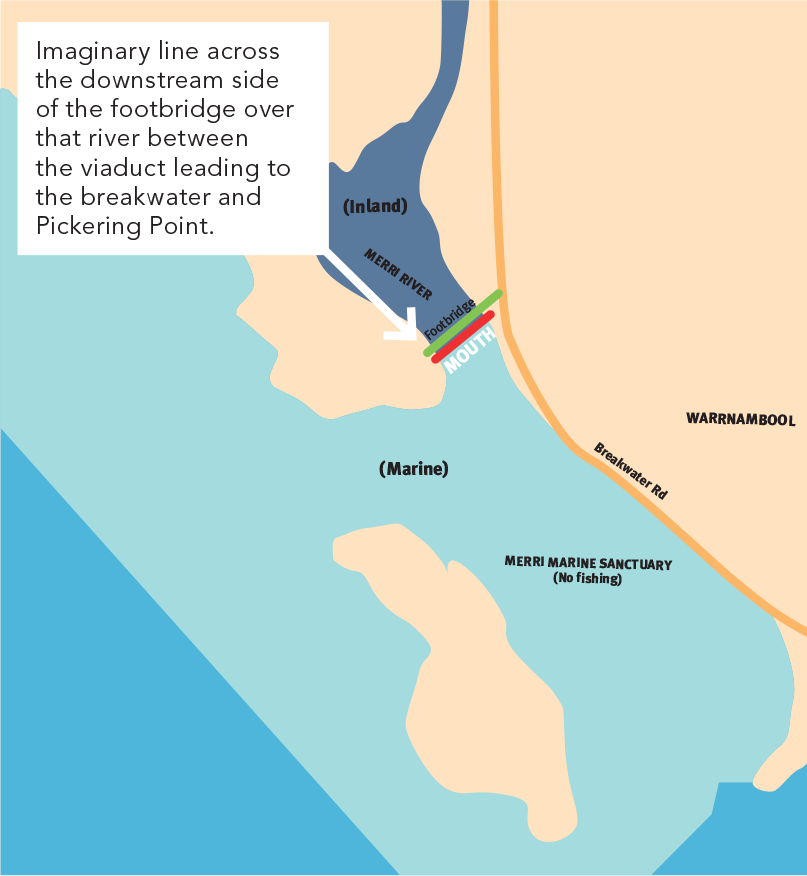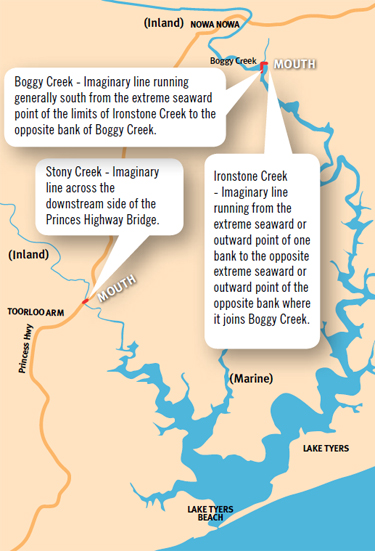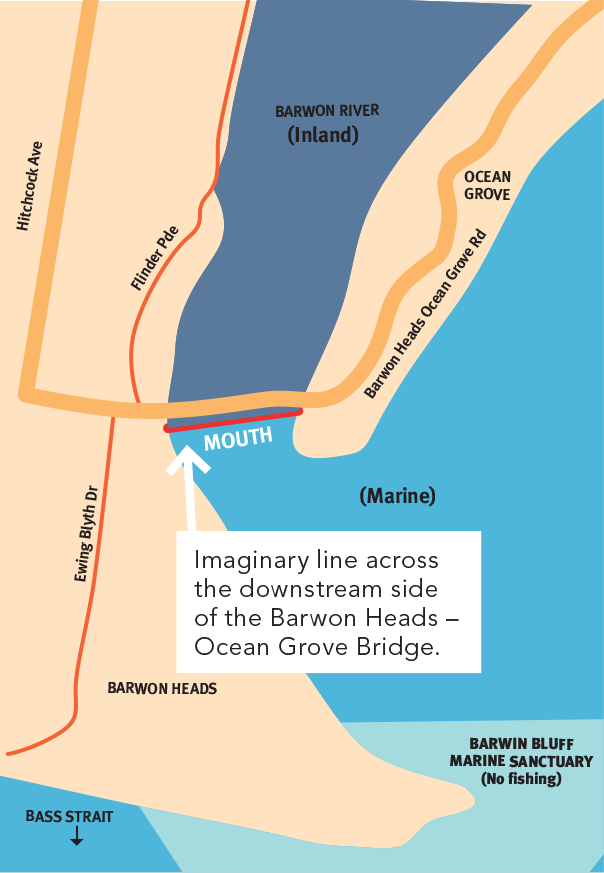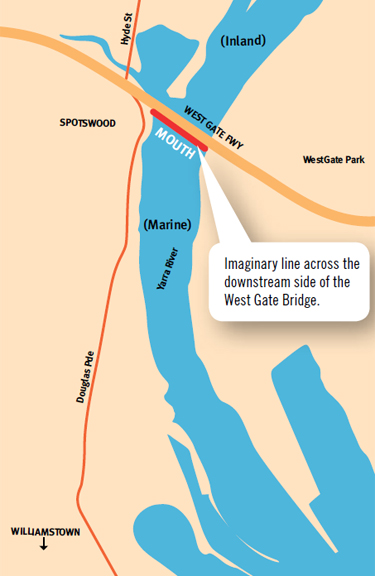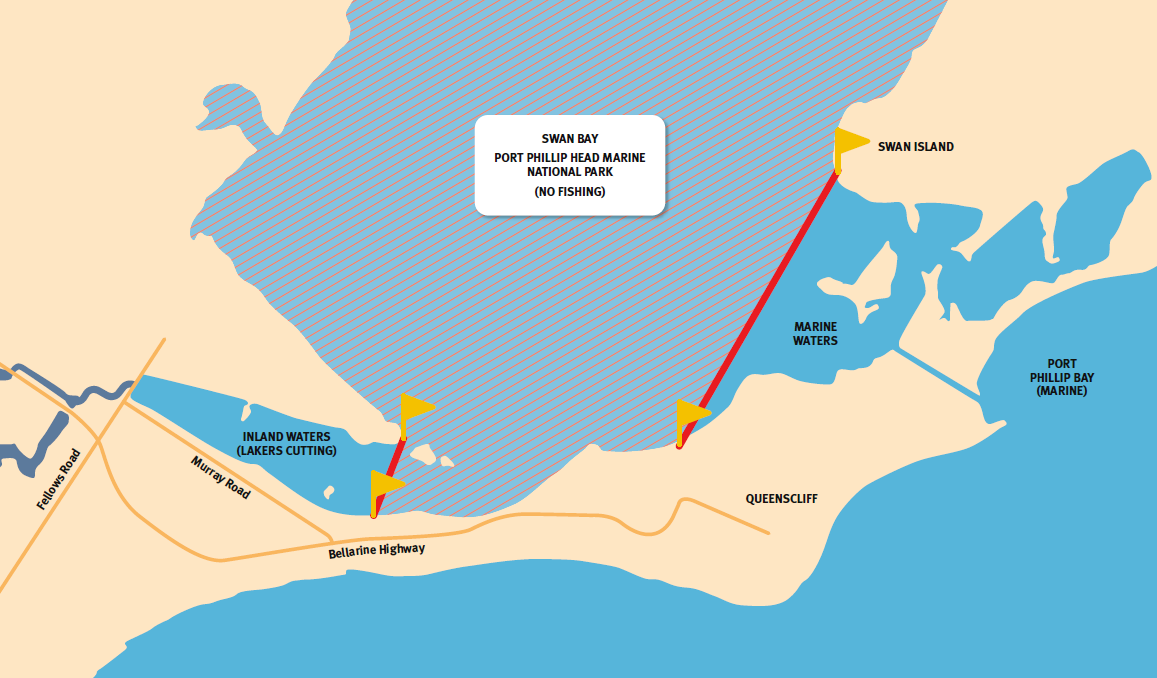Water definitions
Inland waters
Inland waters (freshwater) are:
- any waterway from its mouth to its source and any inlet or lagoon connected with it; and
- any swamp, lake, lagoon, backwater, billabong, dam, river, stream or public water storage reservoir.
Inland waters do not include:
- the Gippsland Lakes, Lower Lake of Mallacoota Inlet (see map 5), Lake Tyers (see map 7), Anderson's Inlet and Wingan Inlet (which are considered marine waters).
Marine waters
Marine waters are:
- the Gippsland Lakes, Lower Lake of Mallacoota Inlet (see map 5), Lake Tyers (see map 7) and Wingan Inlet; and
- Victorian waters that are not inland waters such as (but not limited to) Port Phillip Bay, Western Port.
Note: Water on private property, such as farm dams, are neither inland nor marine waters.
Mouth
Mouth: Imaginary line between the most seaward banks of a river or estuary where:
- those waters meet the sea (for examples see maps 1 and 2).
- where those waters flow into a bay, inlet or lake that is defined as a marine water (eg. Port Phillip Bay, Gippsland Lakes, Wingan Inlet) (see map 3).






